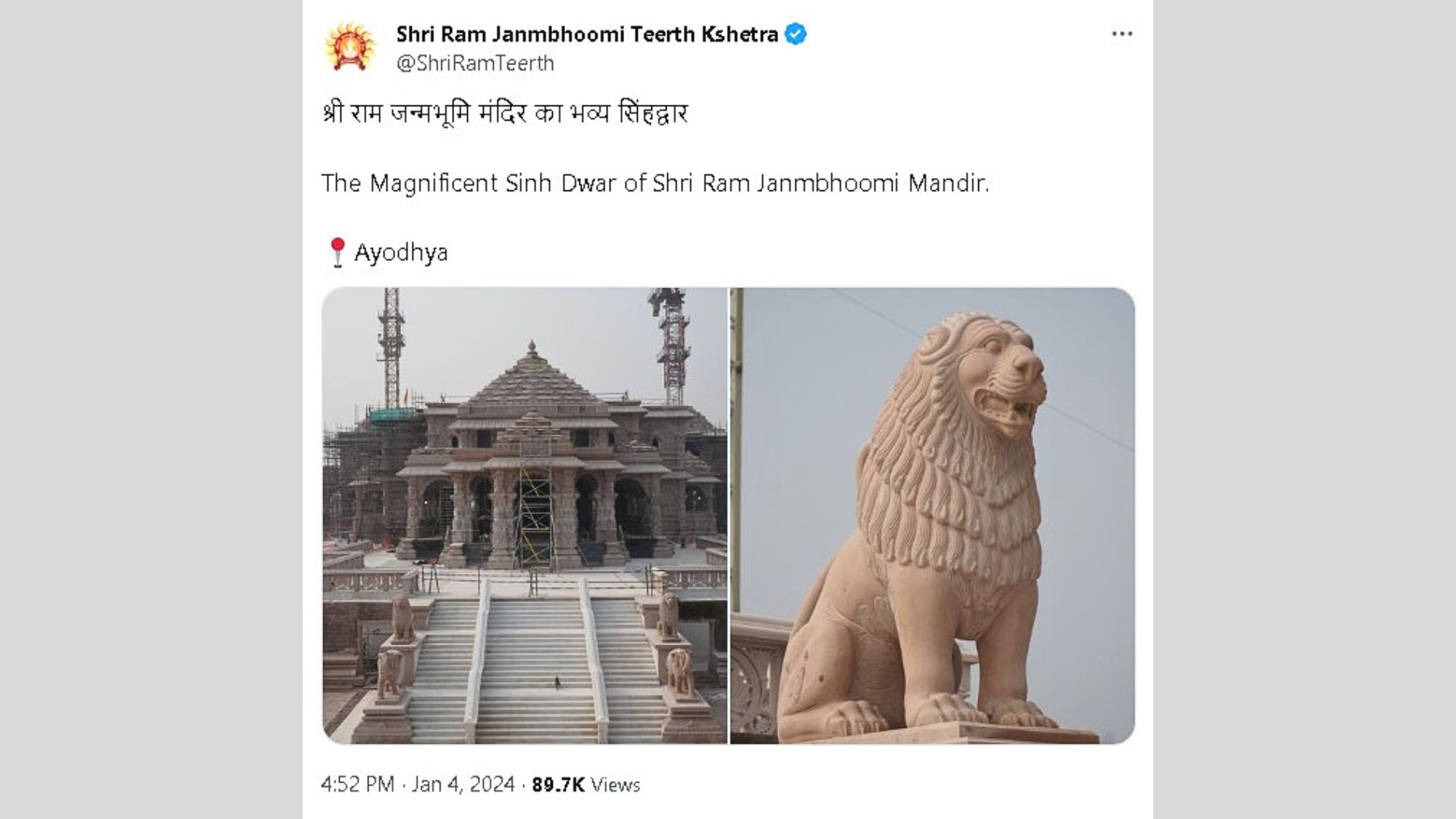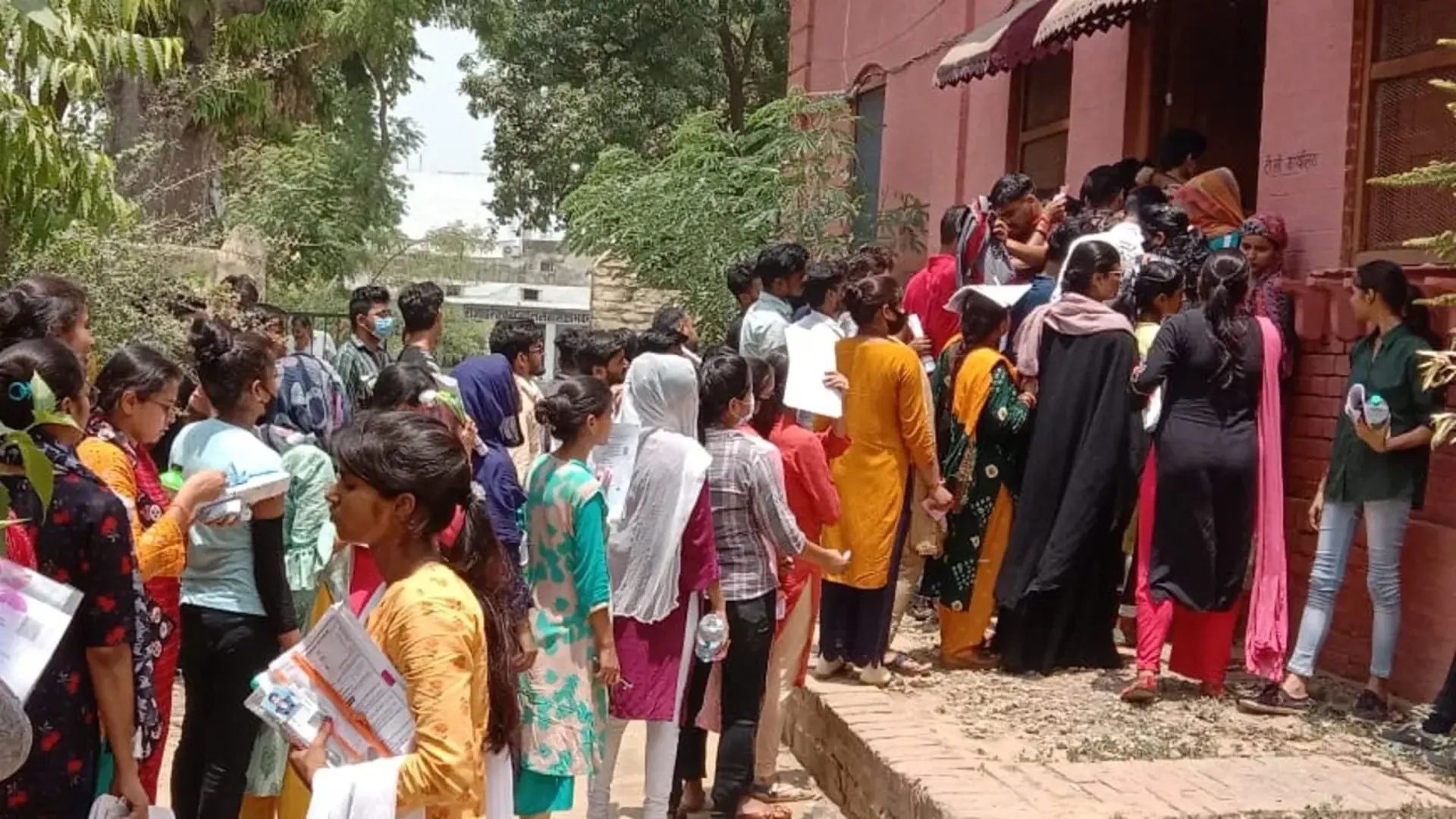The trust overseeing construction of the Ram Temple in Ayodhya has shared the first images of the temple’s main entrance, known as the Sinh Dwar. Prime Minister Narendra Modi will deliver an address during the upcoming inauguration ceremony from this front door.
The trust posted pictures of the “Magnificent Sinh Dwar of Shri Ram Janmbhoomi Mandir” on their official social media account. The pillars and walls of the entrance are exquisitely carved with figures of deities, gods and goddesses. The main eastern entrance leads to the shrine via 32 stairs, with ramps and lifts also provided for accessibility.
A rectangular boundary wall measuring 732 meters long and 14 feet wide, called the Parkota, surrounds the temple complex. Four smaller temples inside the boundary wall are dedicated to the sun god Surya, the goddess Devi Bhagwati, elephant-headed god Ganesh and god Shiva. A temple of the goddess Annapurna is located in the north, and a temple of monkey god Hanuman is in the south.
Near the main temple is an historic well, believed to date back to ancient times, known as the Sita koop. The Ram Janmbhoomi complex will also include proposed temples for the sage Valmiki, Vasishtha, Vishwamitra, Agastya, Nishad Raj, and goddess Shabri.
In the southwest part of the complex, the ancient temple of god Shiva has been restored at Kuber Tila, along with an installation of the mythical bird Jatayu. No iron was used in the temple’s construction. A 21-foot high granite plinth provides protection against ground moisture.
The temple’s foundation was built with a 14-meter thick layer of roller-compacted concrete, giving the appearance of an artificial rock. Facilities like a sewage treatment plant, water treatment plant, fire safety water supply and independent power station have been included.
A Pilgrims’ Facility Center with a 25,000 person capacity is also under construction, and will provide medical services as well as locker facilities for devotees and visitors. The complex will have separate bathing areas, washrooms and open taps for pilgrims.
The shrine was constructed entirely using traditional Indian techniques and materials. Emphasis was placed on environmental conservation, with 70% of the 70 acre area remaining green space.







